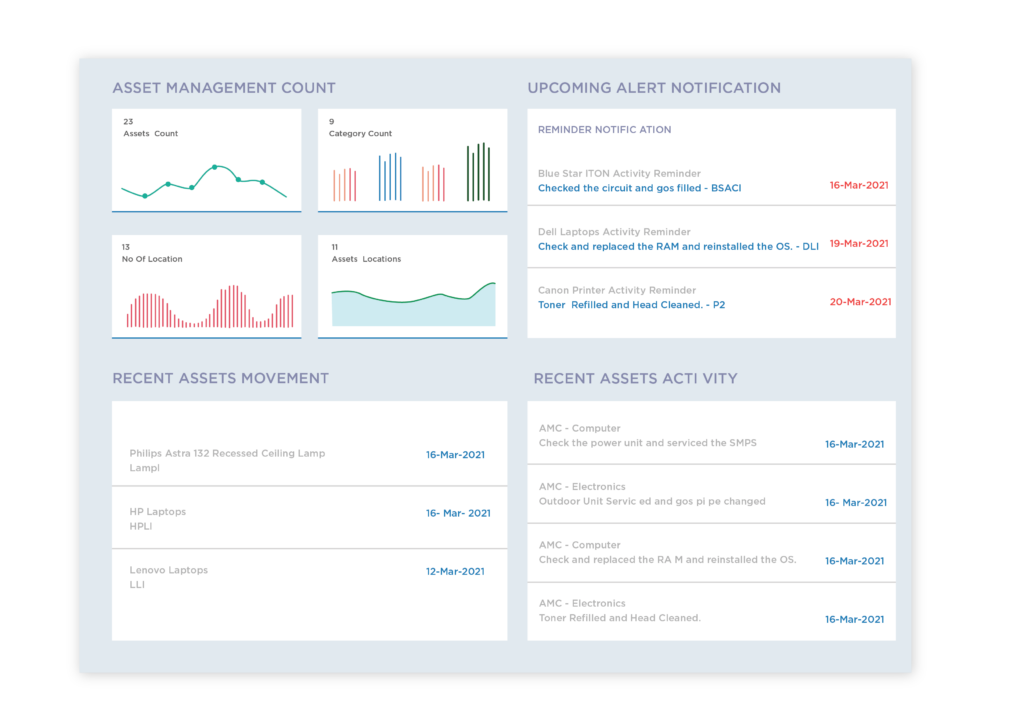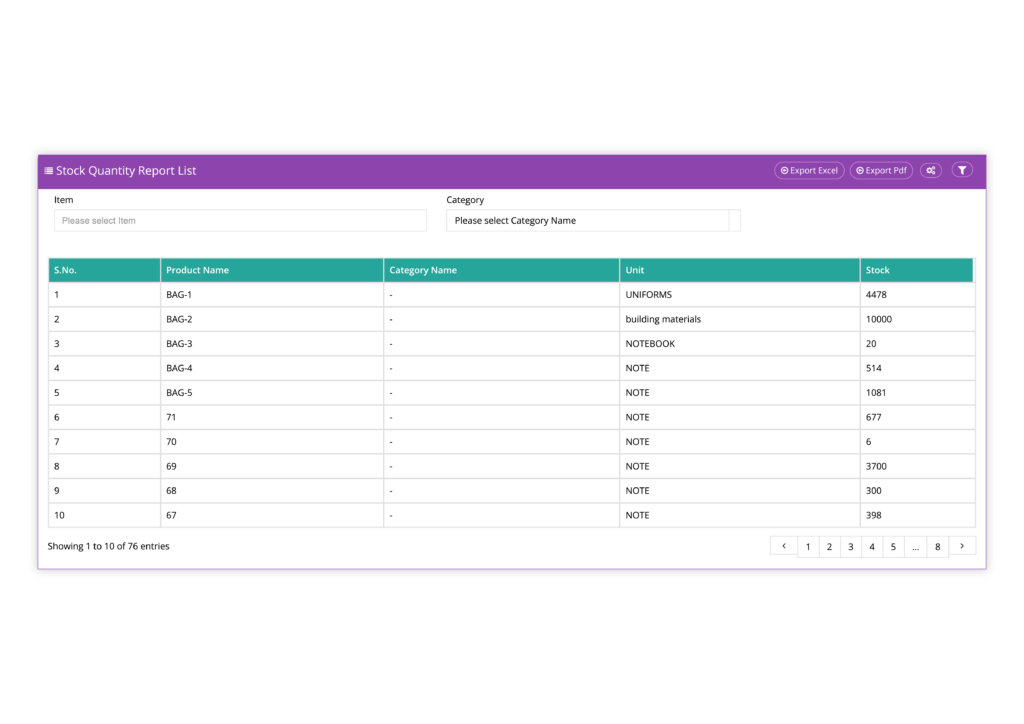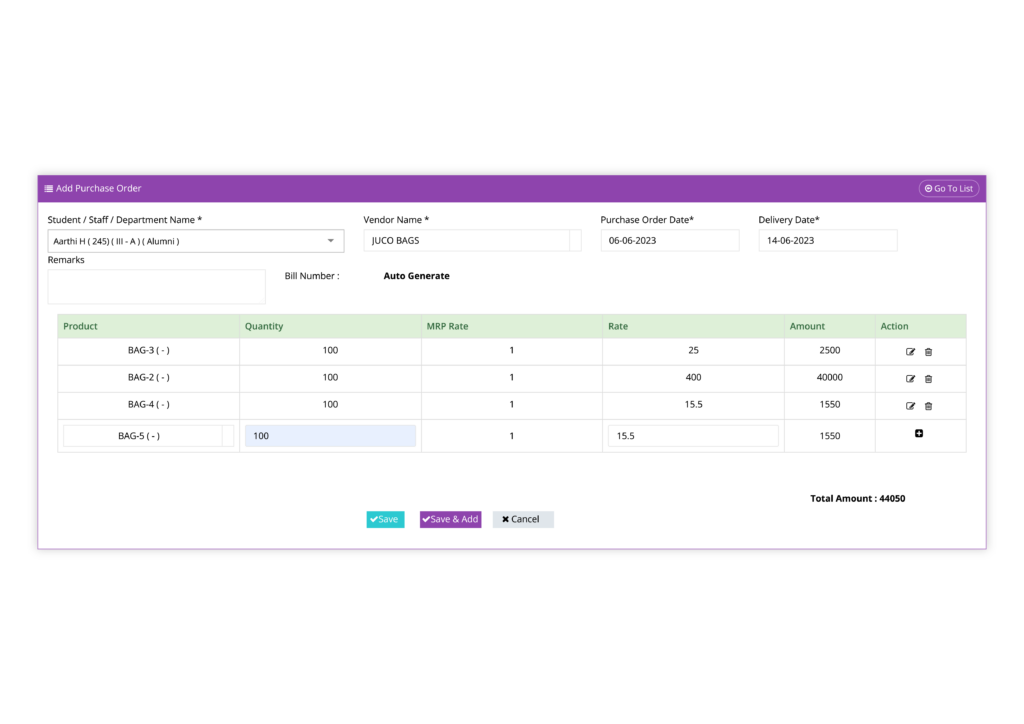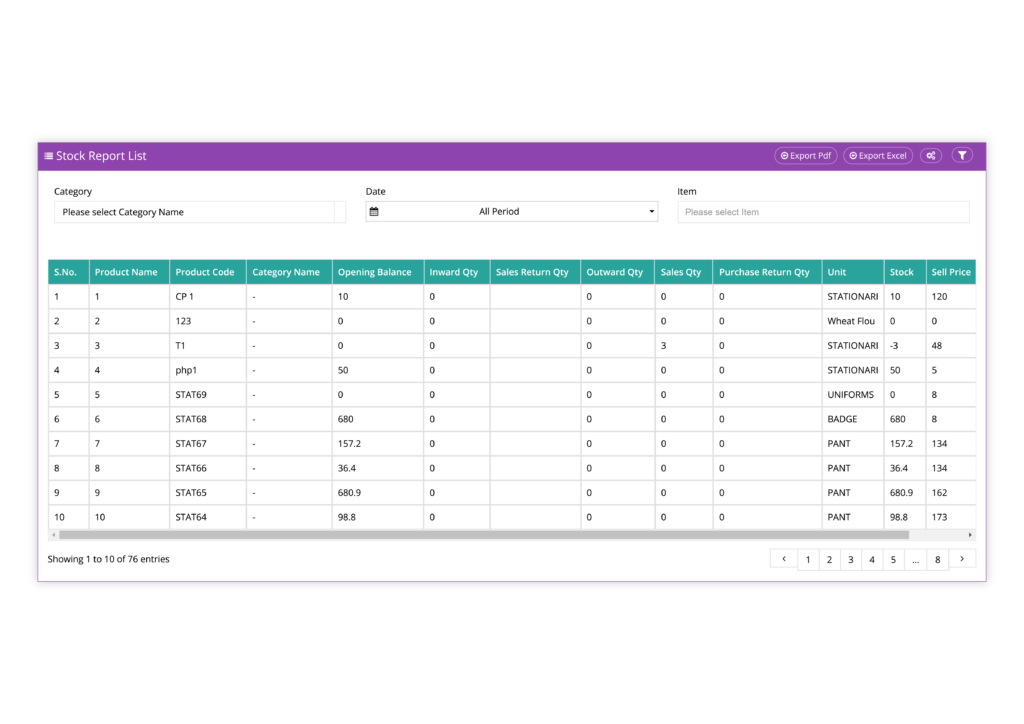School inventory management systems are replacing traditional inventory management processes at a rapid pace. Ever wondered how schools orchestrate a symphony of learning with all the right instruments?
Picture this: a classroom brimming with eager students, teachers poised to impart knowledge, but wait – where are the textbooks? The tablets? The science lab equipment?
This is where the magic of inventory management comes into play. From ensuring textbooks are in hand to guaranteeing science experiments go off without a hitch, effective inventory management is the unsung hero in ensuring smooth academic operations.
To give you a glimpse – nearly 45% of the schools report challenges related to waste and loss in inventory management while a significant number of them face challenges to deal with the expired or overstocked inventory items. And a robust inventory management system can resolve both the issues.
Imagine the seamless flow of classes, the empowered educators, and the equipped students – all resting on the shoulders of a well-organized inventory system. In this exploration, we unravel the core challenges tied to school inventory management and unveil strategies that promise to transform chaos into harmony.
So, let’s get started!
What Is a School Inventory Management System?

A School Inventory Management System is a comprehensive software solution designed to track, organize, and manage the various assets and resources within an educational institution. It provides a structured framework for cataloging items such as textbooks, teaching aids, technological devices, sports equipment, and more.
This system enables schools to maintain a real-time record of their inventory, facilitating efficient monitoring of stock levels, usage patterns, and asset locations. By centralizing inventory data, schools can streamline procurement processes, reduce instances of loss or misplacement, and optimize resource allocation.
A School Inventory Management System empowers educational institutions to enhance operational efficiency, ensure the availability of essential resources, and create an environment conducive to effective teaching and learning.
Also Read: Leveraging Exam Management Systems In Schools: Things To Know
The Key Challenges in Traditional School Inventory Management Process
Efficiently managing the inventory of a school is a task that often goes unnoticed but plays a crucial role in ensuring the smooth functioning of educational institutions. The seamless availability of resources like textbooks, teaching aids, technology, and sports equipment is vital for facilitating effective teaching and learning.
However, the traditional management of these assets comes with its fair share of challenges such as –
1. Difficulties in Asset Tracking
One of the most fundamental challenges in school inventory management is the accurate tracking of assets. Schools are complex environments with numerous classrooms, labs, libraries, and facilities.
Each space is equipped with a variety of resources that need to be maintained, tracked, and accounted for. The manual tracking of these assets can lead to errors, misplacement, and even theft.
In the traditional system, assets were often logged in spreadsheets or paper-based records, making it time-consuming to locate items. This approach also heightened the risk of inaccuracies, leading to incorrect information about the availability and condition of resources.
As a result, educators and administrators might struggle to find necessary materials when needed the most, affecting the quality of education.
2. Getting Updates on Low Stock
Running out of essential supplies can bring educational activities to a grinding halt. Teachers relying on teaching aids, students in need of textbooks, or laboratories requiring specific equipment – a shortage of resources disrupts the teaching and learning process.
Traditional methods of inventory management, such as manual stock checks, often fail to provide timely information about low stock levels.
3. Challenges With Integration
The modern school environment involves the coordination of various departments and functions that collectively contribute to its operation. From academic departments and administration to extracurricular activities, there’s a need for seamless communication and collaboration.
The challenge arises when different areas of the school rely on separate systems that don’t effectively communicate with each other.
For instance, consider a scenario where the library management system operates independently from the inventory system of science laboratories. This can lead to duplicate entries, data inconsistencies, and overall inefficiencies. When new resources are acquired, integrating them into the existing inventory ecosystem becomes cumbersome without a centralized approach.
4. Not Being Able to Analyze Properly
As educational institutions strive to provide optimal learning environments, efficient resource allocation is imperative. However, without effective data analysis, schools are hindered in making informed decisions that can lead to enhanced operations.
Proper analysis of inventory data is essential for various reasons. Firstly, it enables administrators to identify consumption patterns and trends over time. Without the ability to analyze data, schools may struggle to recognize which supplies are in high demand, leading to overstocking of certain items while others remain insufficient. This imbalance can result in wastage of resources and budget constraints.
Furthermore, the inability to analyze data prevents schools from accurately predicting future needs. This can lead to unexpected shortages, disrupting daily operations and affecting the teaching and learning process. In contrast, with robust data analysis, schools can proactively monitor usage patterns and implement effective inventory replenishment strategies.
Lack of data analysis also affects budget management. Schools operate within limited financial resources, and without a comprehensive understanding of expenditure patterns, it becomes challenging to allocate budgets optimally. Analysis of data aids in identifying areas of overspending or underspending, allowing administrators to reallocate funds where they are most needed.
Also Read: Ensuring Student Safety: The Benefits Of School Bus Live Location Tracking
Simplify School Inventory Management With Neverskip: Overcome the Key Challenges
In the ever-evolving landscape of education, efficient management of school resources is crucial for providing a conducive learning environment. From classroom supplies to essential equipment, maintaining an organized inventory plays a pivotal role in ensuring smooth operations.
Traditional inventory management methods are often laborious, error-prone, and time-consuming. This is where Neverskip, a cutting-edge school inventory management software, steps in to revolutionize the way educational institutions handle their assets.
1. Streamlined Asset Tracking

One of the primary challenges educational institutions face is keeping track of their diverse inventory spread across various departments and classrooms. Neverskip’s school inventory management software offers a streamlined solution to this issue.
Through a visually intuitive interface, administrators and staff can easily input, track, and locate school supplies and equipment. This user-friendly system eradicates the need for manual record-keeping, reducing the chances of errors and time wastage.
Moreover, Neverskip’s software provides real-time information about the current inventory status and the exact whereabouts of items. This feature is particularly valuable for optimizing the use of resources and preventing over-purchasing or under-utilization.
School administrators can quickly ascertain which supplies are in abundance and which ones need replenishing, ensuring a smooth flow of materials for uninterrupted educational activities.
2. Timely Low-Stock Alerts

Running out of essential supplies at critical moments can disrupt the teaching and learning process. Neverskip’s inventory management system eliminates this concern by implementing timely low-stock alerts.
As supplies reach predetermined threshold levels, administrators and designated personnel receive instant notifications. These alerts serve as proactive reminders to replace or reorder inventory, enabling the school to stay well-stocked and prepared at all times.
The low-stock alert feature not only prevents last-minute rushes to acquire supplies but also enhances overall operational efficiency. This proactive approach empowers schools to maintain a steady inventory flow, reducing the risk of unexpected shortages and allowing educators to focus on delivering quality education without unnecessary interruptions.
3. Hassle-Free Integration With Purchasing

Efficient inventory management extends beyond tracking and alerts; it involves seamless integration with the purchasing process. Neverskip’s software offers a robust solution by bridging the gap between inventory management and procurement.
Through this integration, the school’s supply chain management process becomes more streamlined and time-efficient. Real-time insights into stock availability and supplier performance are pivotal in making informed decisions.
Neverskip’s software facilitates this by providing administrators with up-to-date data, enabling them to make well-informed purchasing choices. The integration also helps prevent overstocking or understocking by aligning inventory levels with actual demand, thereby reducing unnecessary expenses and optimizing resource allocation.
4. In-depth Analytics & Insights

The power of data cannot be underestimated in any operational context, including school inventory management. Neverskip’s software goes beyond basic tracking and alerting by offering in-depth analytics and insights. Schools can generate comprehensive reports on various aspects of inventory management, such as inventory levels, asset utilization, maintenance history, and other key metrics.
These reports enable administrators to make informed decisions regarding resource allocation and procurement strategies. By identifying trends and patterns in inventory usage, schools can optimize their purchasing plans, minimize stockouts, and reduce the likelihood of over-purchasing. This data-driven approach contributes to improved operational efficiency and cost savings.
Additionally, the analytical capabilities of Neverskip’s software empower schools to identify areas where improvements are needed. Whether it’s reallocating resources, refining procurement processes, or enhancing asset utilization, these insights guide strategic decision-making for long-term success.
Also Read: Enhancing Campus Safety: The Role Of Attendance Management Systems In Emergency Situations
The Bottom Line
The future of school inventory management lies in embracing robust systems like Neverskip’s advanced inventory management solution. With its streamlined asset tracking, timely low-stock alerts, seamless integration with purchasing, and insightful analytics, Neverskip offers an all-encompassing approach to overcoming the challenges of inventory management in educational settings.
By adopting such innovative technology, schools can ensure efficient resource allocation, reduced operational disruptions, and informed decision-making. To witness the transformative potential firsthand, take a step towards a more organized future – request a free demo of Neverskip’s powerful inventory management system today.








